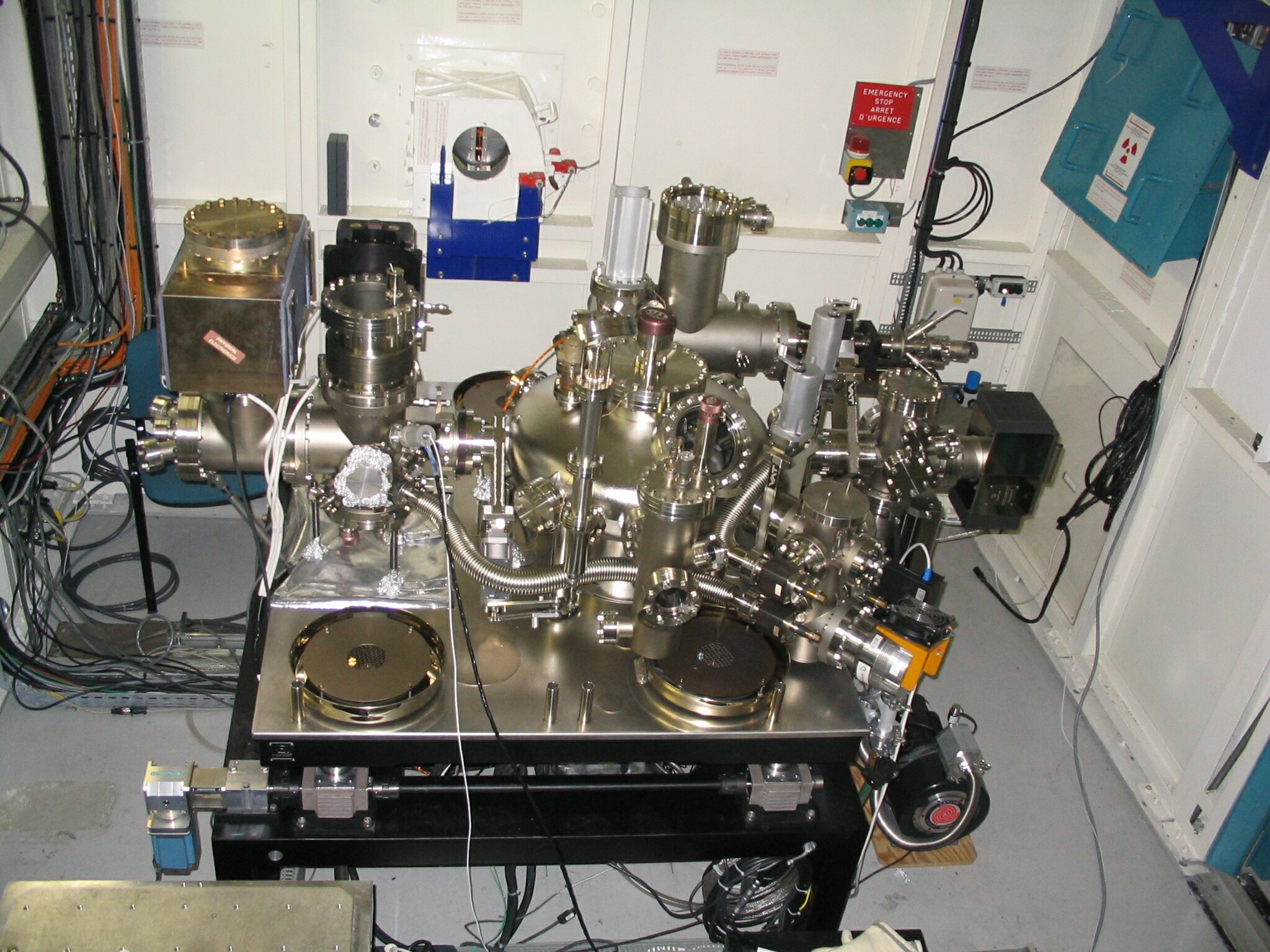UHV system

In the framework of the FP6 programme (DYNASYNC) a versatile UHV environment has been purchased in 2004 to allow for in-situ preparation, characterization and NRS measurements of samples. The emphasis of the research is on fast and slow dynamics as well as on magnetic and electronic properties of nano-scale structures on surfaces and interfaces. The main characteristics are as follows:
-
Preparation (molecular beam epitaxy) and characterization of samples under UHV conditions at temperatures between 100 K and 2300 K. Characterization by "Low Energy Electron Diffraction" (LEED), "Auger Electron Spectroscopy" (AES), and "Reflection High Energy Electron Diffraction" (RHEED).
-
Investigation of the samples in the synchrotron radiation beam under UHV conditions by the following techniques: GI-NRS (grazing incidence nuclear resonance scattering), NQES (nuclear quasi-elastic scattering), and NIS (nuclear inelastic scattering).
-
Manipulation of the sample under investigation with respect to the synchrotron radiation beam by vertical (6.25 nm resolution) and horizontal (5 um resolution) translations and rotations around the three axes of the sample with resolution for Bragg: 0.2 urad, tilt: 1.5 urad, and vertical axis: 1o.
-
Storage of prepared samples under UHV conditions.
-
Load-lock system for transfer of samples under UHV conditions in and out of the system.
-
Provision to adapt other equipment as e.g. a transportation chamber to the system.
-
Distribution of samples between the different stations, i.e. the preparation, characterization, measurement, and storage area.



